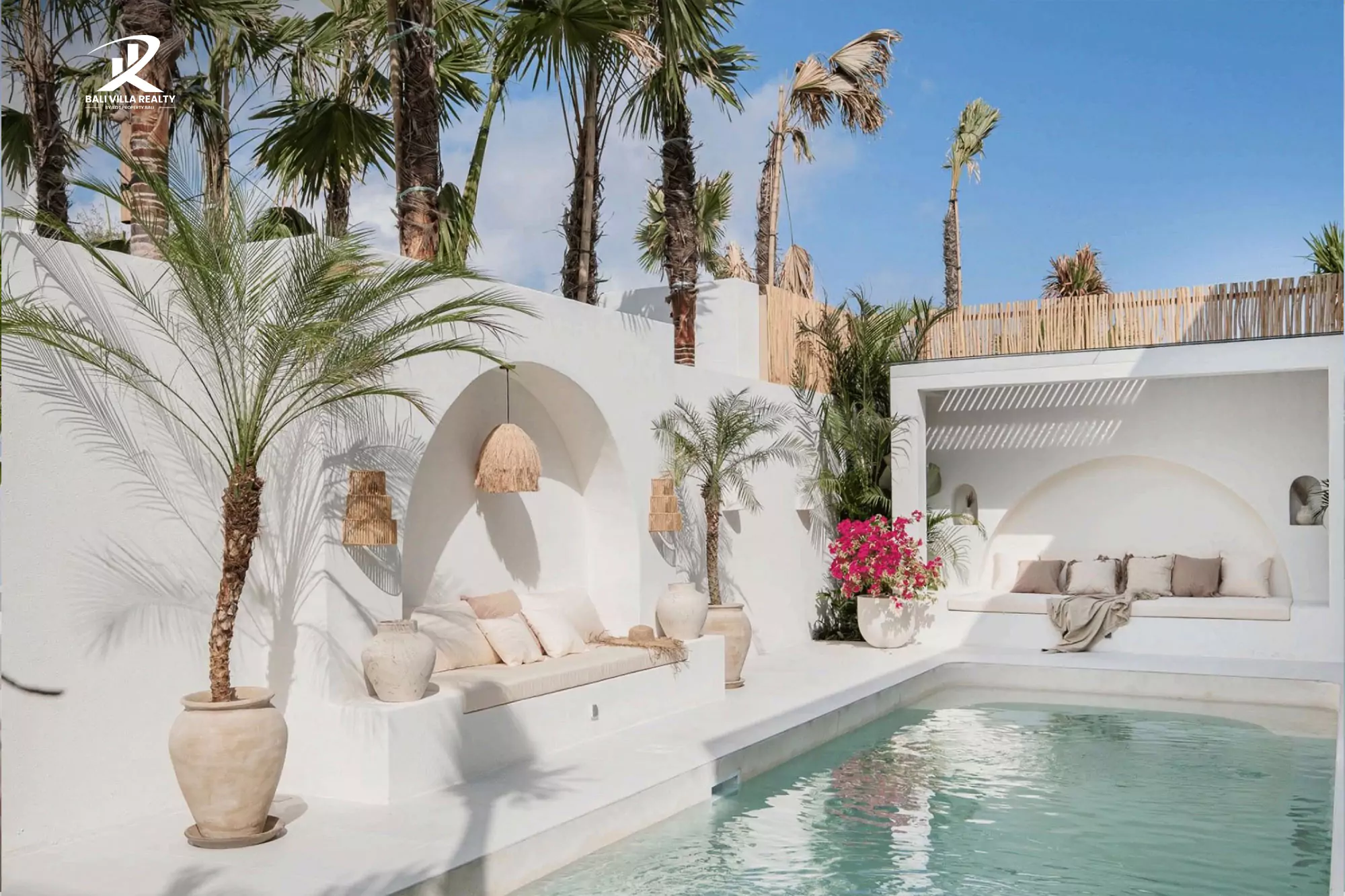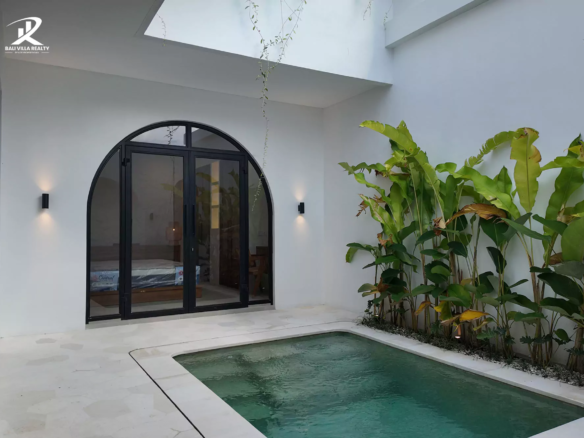The Island of Gods is filled with rich traditions, sacred rituals, and deep respect for ancestors. As you walk or ride through Bali, it’s impossible not to notice canang sari—the small daily offerings placed everywhere as a gesture of gratitude.
But beyond these everyday offerings, Bali also has many larger and deeply meaningful ceremonies, including the Melaspas ritual.
Last week, as someone newly living in Bali, I had the chance to attend one. The experience not only taught me about the spiritual purpose behind the ceremony, but also showed me how strongly Balinese culture is woven into everyday life.
In this article, we'll explore the meaning, philosophy, steps, and personal reflections behind this sacred ritual.
Disclaimer: This article is written by one of our foreign team members, based on her personal experience attending a Melaspas ceremony.
Key Takeaways
- Melaspas is a sacred purification ceremony performed to cleanse and bless a newly built structure before it’s used, ensuring the space is spiritually harmonious.
- The ritual reflects core Balinese philosophies like Tri Hita Karana (harmony between gods, people, and nature) and Rwa Bhineda (balance of opposites). The ceremony also reveals how deeply Balinese culture is integrated into daily life.
- The ceremony involves prayers, offerings, holy water, and blessings led by a priest, symbolizing gratitude, protection, and the “awakening” of the building’s spiritual essence (taksu).

What is Melaspas?
Melaspas comes from two Balinese words:
- “Melas” meaning “to cleanse”
- “Pas” meaning “to return to purity”
Together, they describe a ritual intended to cleanse a building from spiritual impurities and prepare it to receive positive energy. Before a house, temple, villa, or even office is occupied, Melaspas ensures that the space is spiritually safe and harmonious.
Who Performs the Melaspas?
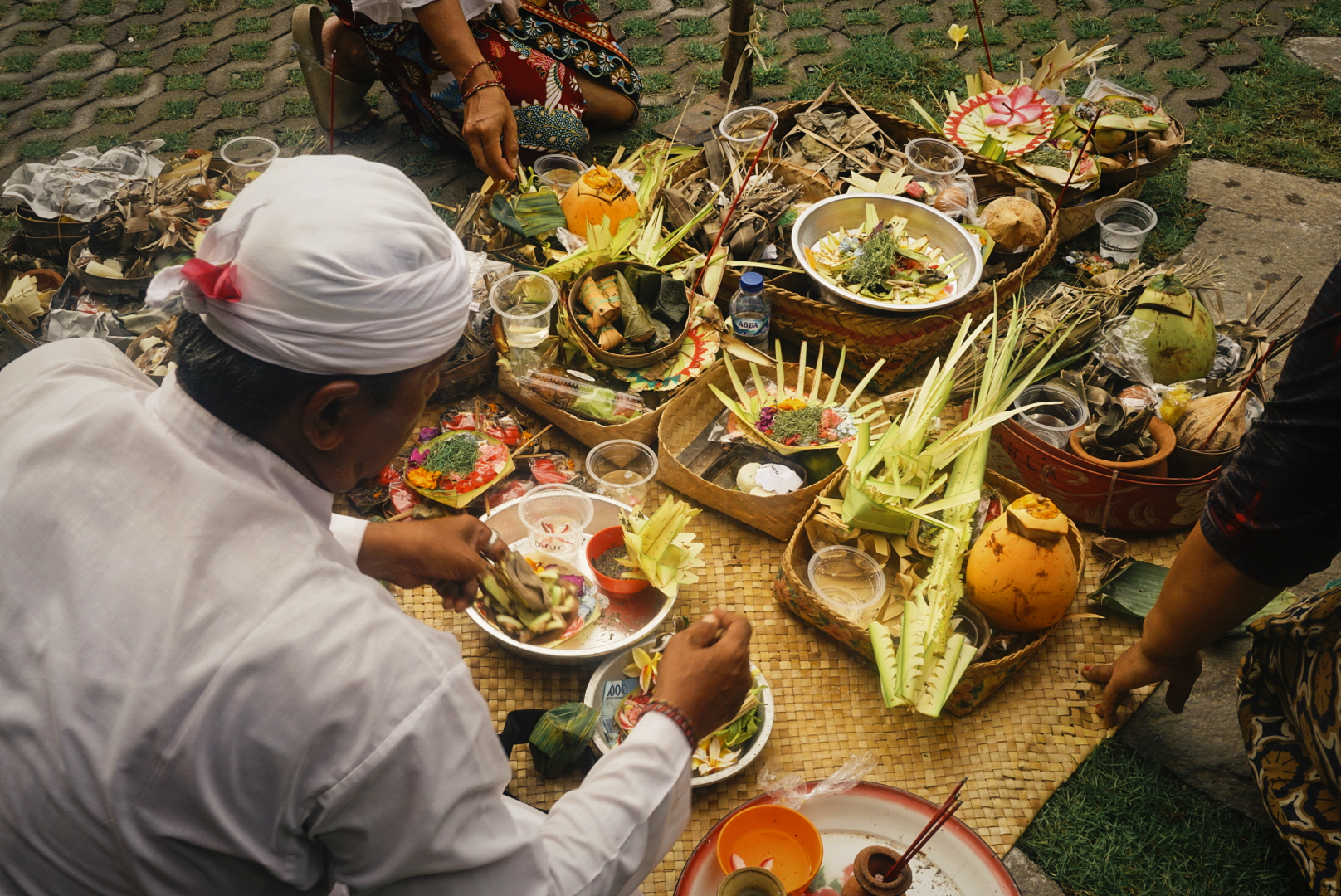
While canang sari and other daily offerings can be done by anyone, the Melaspas ceremony must be led by a priest.
Some ceremonies are conducted by a pemangku (temple priest), while larger or more formal ones may require a pedanda (high priest).
The choice of a priest depends on factors such as the size of the building or the status of the family.
Read More: The Truth of Bali Breakup Curse (And How to Avoid It)
The Philosophy Behind Melaspas
One thing I love about Bali is that almost everything has a deeper meaning behind it, even building a house. The Melaspas ceremony is rooted in a Balinese philosophy called Tri Hita Karana, which basically means “the three ways to create harmony.”
It’s all about keeping a good balance between:
- Gods—staying spiritually connected
- People—living in peace with others
- Nature—respecting the environment around you
Melaspas ties all of this together. It's like saying, “This new building is ready, now let’s make sure it’s in harmony with everything around it.” It’s a reminder that a home or villa isn’t just walls and floors, but part of a bigger universe.
Another idea that shows up in this ceremony is Rwa Bhineda, which is the Balinese version of yin and yang. Life always has two sides, which are good and bad, clean and unclean, and both are natural. The ceremony helps shift the energy toward balance, so the space starts off on the right foot.
In a way, Melaspas feels like pressing a spiritual reset button before anyone steps inside.
Read More: 6 Best New Year’s Eve Parties in Bali 2025 You Can’t Miss
The Function and Purpose of Melaspas
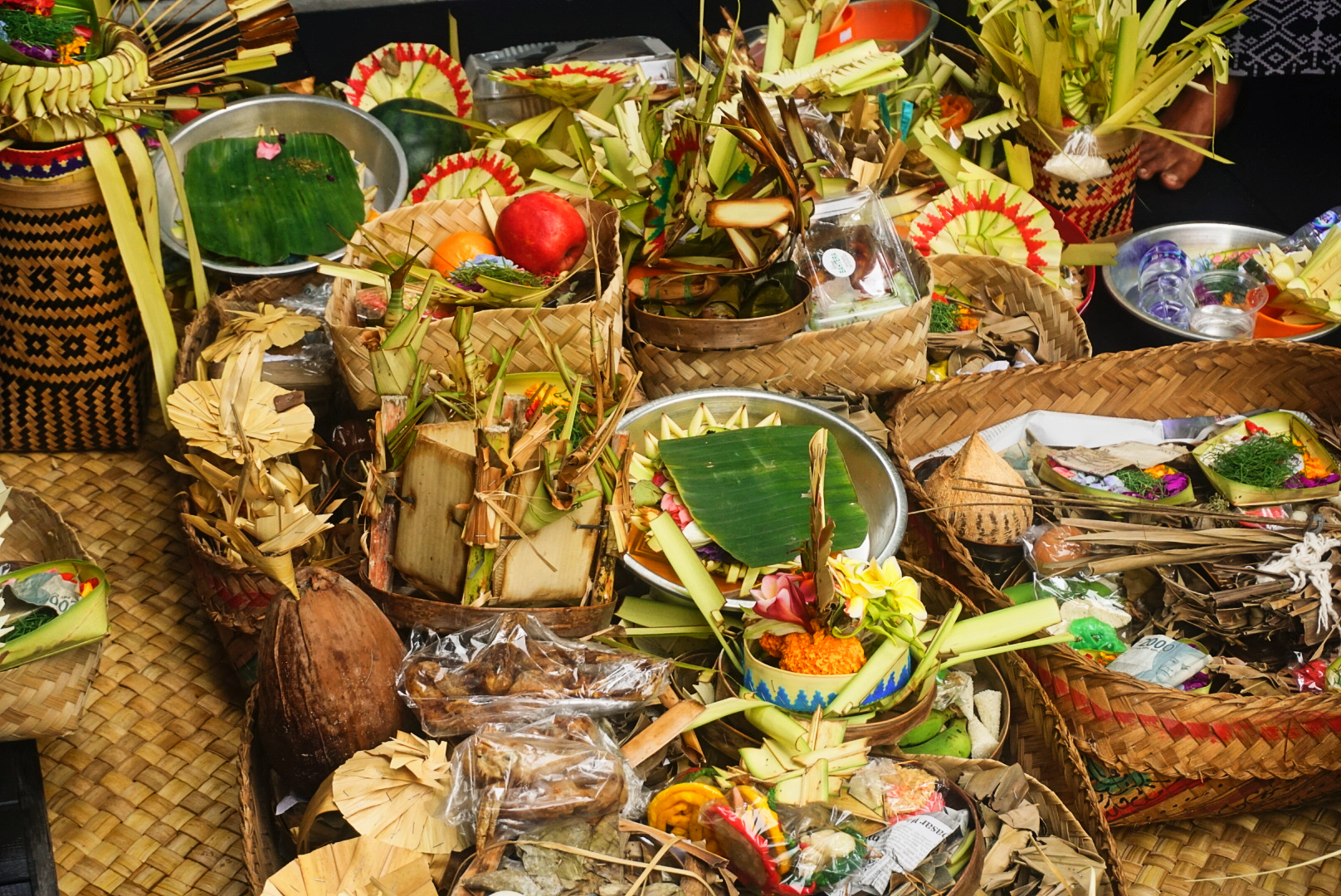
Melaspas serves several important functions in Balinese Hindu belief:
Purification of the Building
Construction is seen as a process that disturbs the natural environment. Melaspas restores balance by cleansing the space from leteh (impurities) that may have accumulated during building.
Inviting Protective Energies
During the ceremony, the priest invites positive forces and guardian spirits to protect the occupants.
Giving the Building a “Soul” (Taksu)
In Balinese spirituality, everything—objects, tools, and spaces—can have taksu, a kind of spiritual charisma or life force. Melaspas activates this quality, allowing the building to feel “alive” and energetically aligned.
Showing Gratitude and Respect
The ritual expresses gratitude to the gods and the elements for providing the materials and land needed to build.

Steps in a Melaspas Ceremony
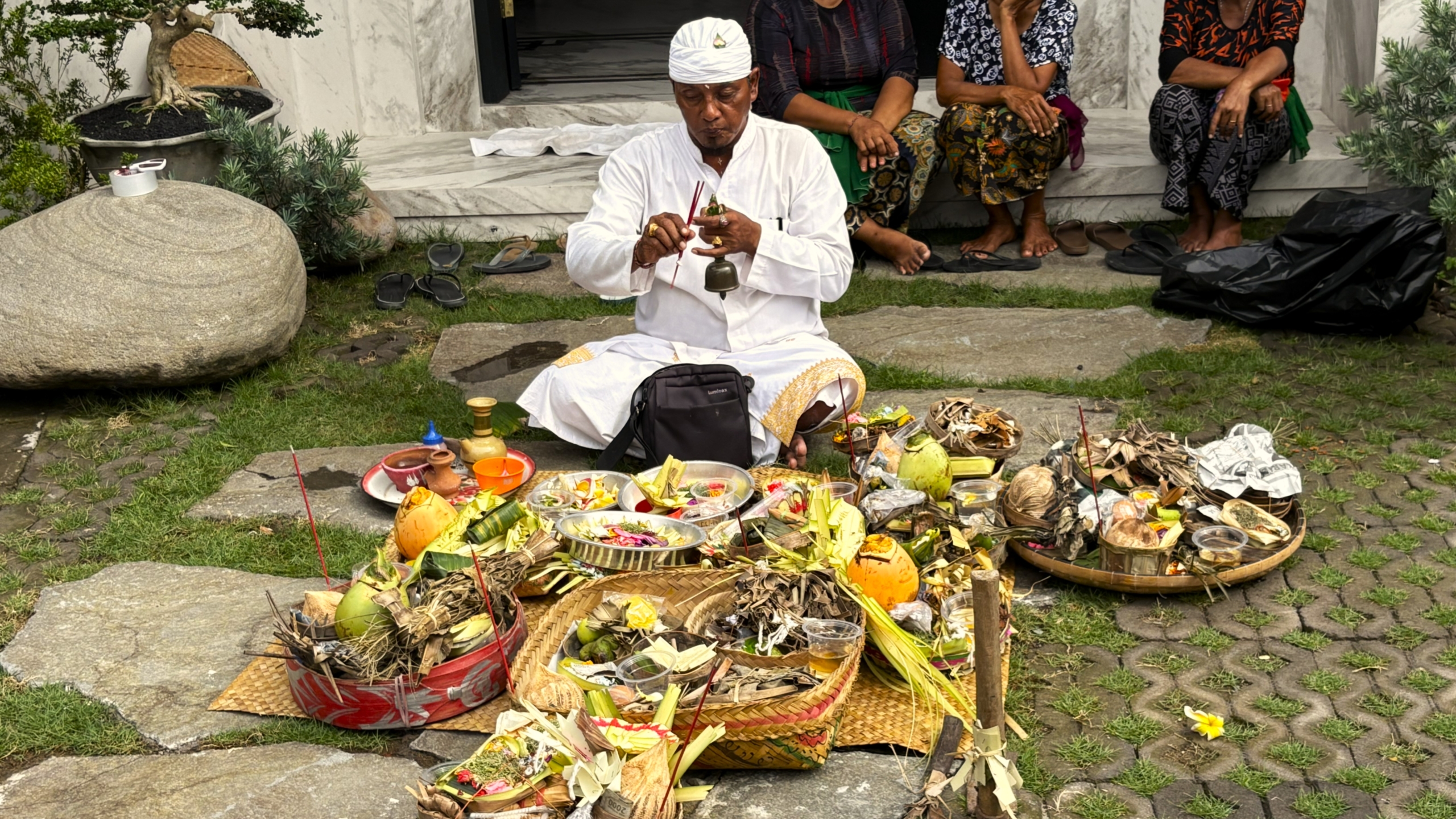
While the details vary by region or type of building, a typical Melaspas includes:
1. Preparing Offerings (Banten)
Beautifully arranged offerings are placed around the building:
- Canang sari, tumpeng (cone-shaped rice), fruit, flowers
- Sometimes special offerings for each room or corner. These symbolize gratitude and purification.
2. Sprinkling Holy Water (Tirta)
The priest sprinkles holy water to cleanse the space. Participants also receive holy water to drink and place on their head, symbolizing inner purification.
3. Pejati and Daksina Offerings
These are placed as the main offerings to the gods, representing sincerity and devotion.
4. Blessing the Structure
The priest touches or blesses important parts of the building (entrances, rooms, altars) with holy water, smoke, and mantras.
5. Nunas Tirtha (Receiving Blessing)
Everyone attending receives holy water, symbolizing their participation in the purification.
6. Marking the New Beginning
After the ceremony, the building is considered spiritually ready. People may begin using it, moving in, or opening it for business.
Read More: Is Bali a Safe Place to Live? 5 Tips for Risk-Free Villa Purchase in Bali
Our Melaspas Story
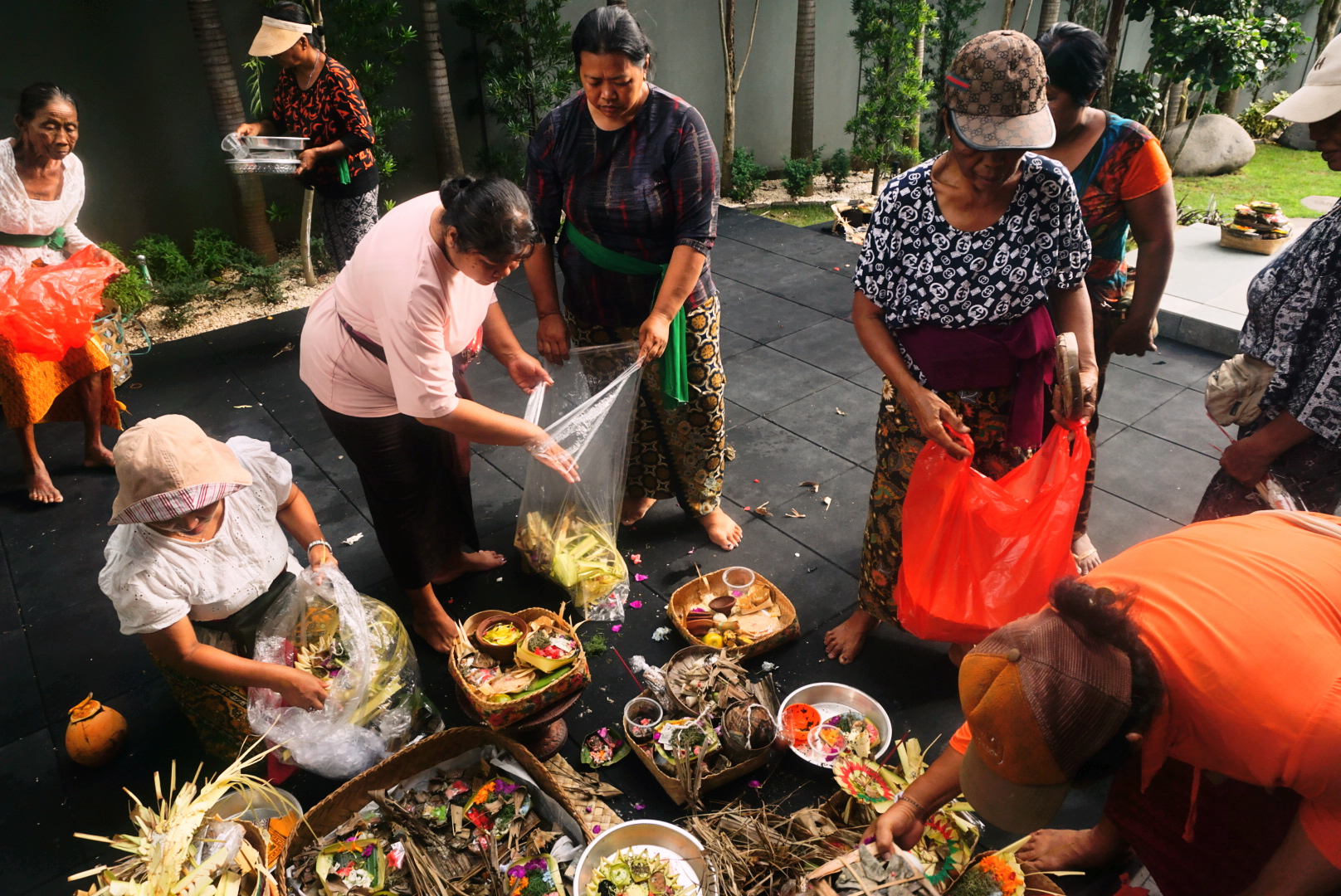
As one of Bali’s real estate companies, Bali Villa Realty often gets the opportunity to take part in melaspas ceremonies.
This time, we joined a melaspas at one of the villas built by our construction company, Ilot Property Bali. We weren’t involved in the ceremony itself, but we spent time quietly observing the process—watching the preparations, the offerings, the priest, and the villa owner’s family working together.
What amazed us most was how peaceful and intentional everything felt. Even from the outside, you could sense the meaning behind every step. The chanting, the incense drifting through the air, and the beautifully arranged offerings created a calm, sacred atmosphere that made us pause and appreciate the moment.
Everything was done with such care. It was amazing to see how thoughtfully each offering was placed, how everyone seemed to know their role, and how natural the whole process felt to them.
It made us realize how deeply connected Balinese people are to their traditions, and how these rituals aren’t just “events,” but a meaningful part of everyday life.
Conclusion
Melaspas is far more than a ritual. It’s a reflection of the deep spiritual values that shape life in Bali. Experiencing it firsthand shows how every building here is treated with respect and gratitude before it is used for any purpose.
In the end, Melaspas reminds us that a home in Bali is not just built—it is blessed, welcomed, and brought to life with meaning.
Want to start investing in Bali property?
Have a quick chat with our real estate experts for personalized advice on your Bali investments. No commitment required.
FAQ
It's called "Sembah", a traditional Indonesian gesture of respect. It’s done by pressing the palms together in front of the chest, then raising them slightly while bowing. The hands may be lifted up to the chin or nose, depending on who you're greeting.
Two major ceremonies stand out: Galungan and Kuningan, a 10-day celebration of good triumphing over evil, and Melasti, a large purification ritual held before Nyepi
It’s called Melukat, a Hindu purification ceremony where people bathe in sacred water to cleanse the mind, body, and spirit. It’s usually done at holy springs or temples using tirtha (holy water) believed to have powerful purifying energy.





